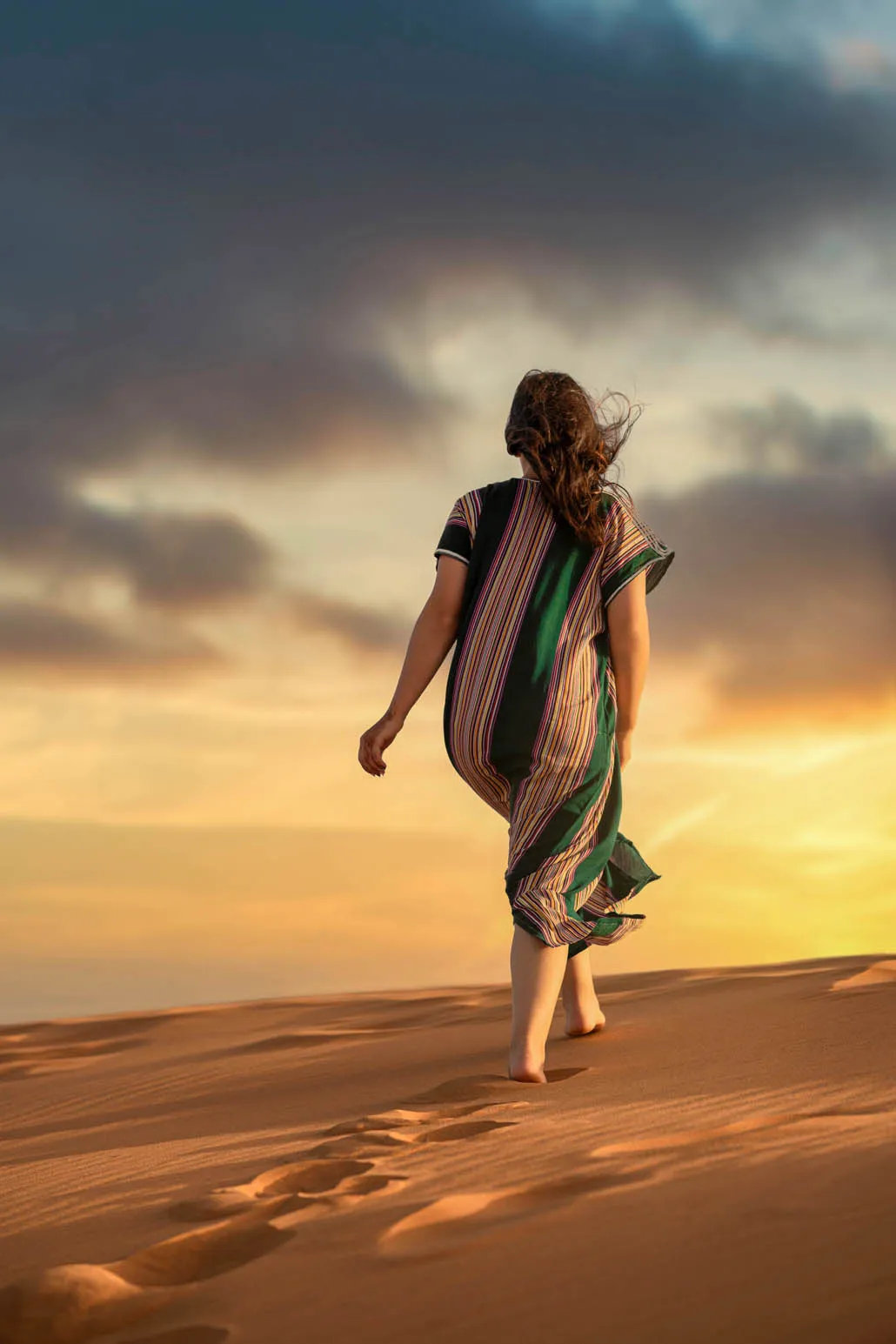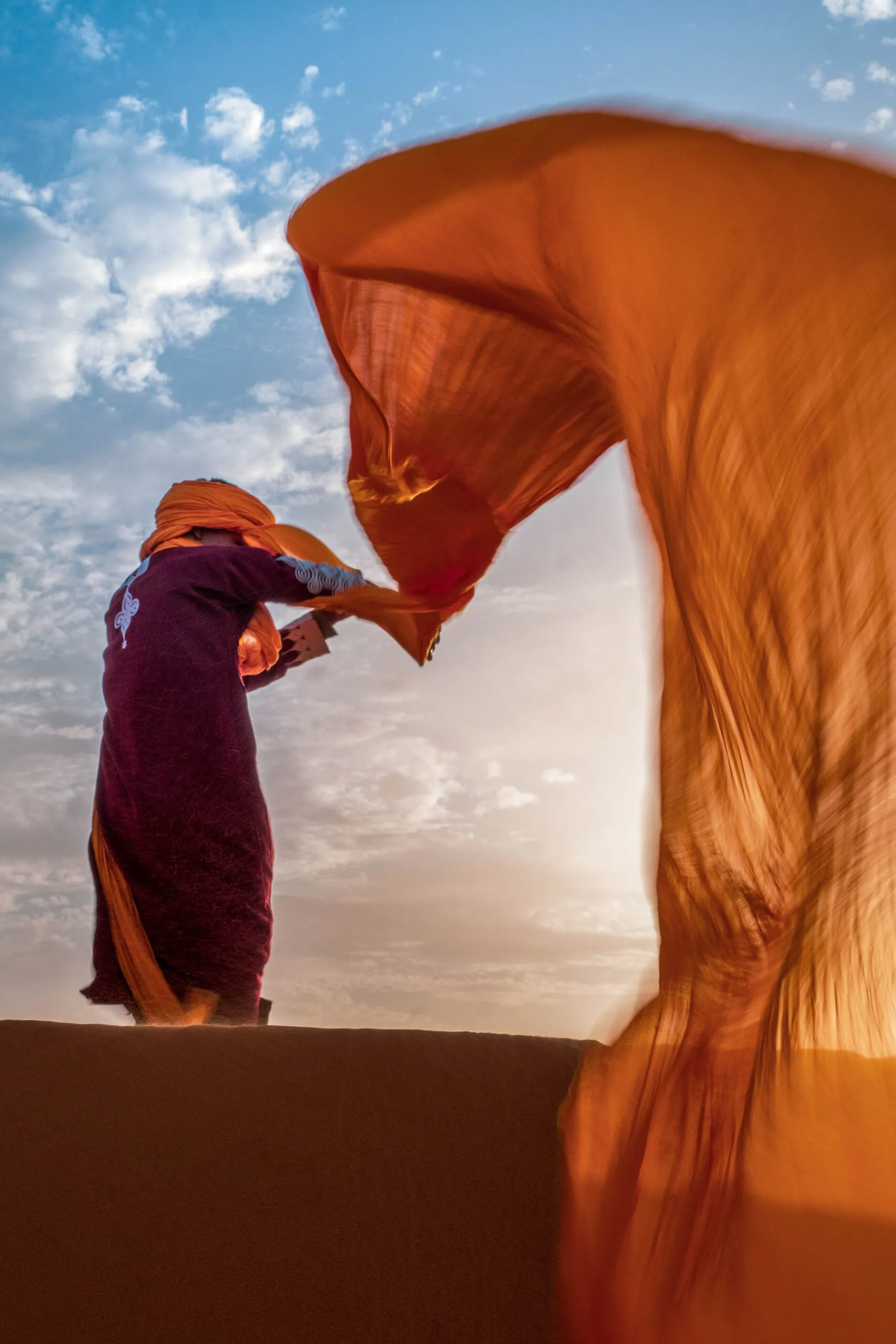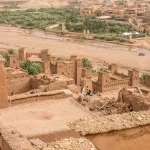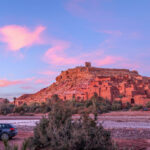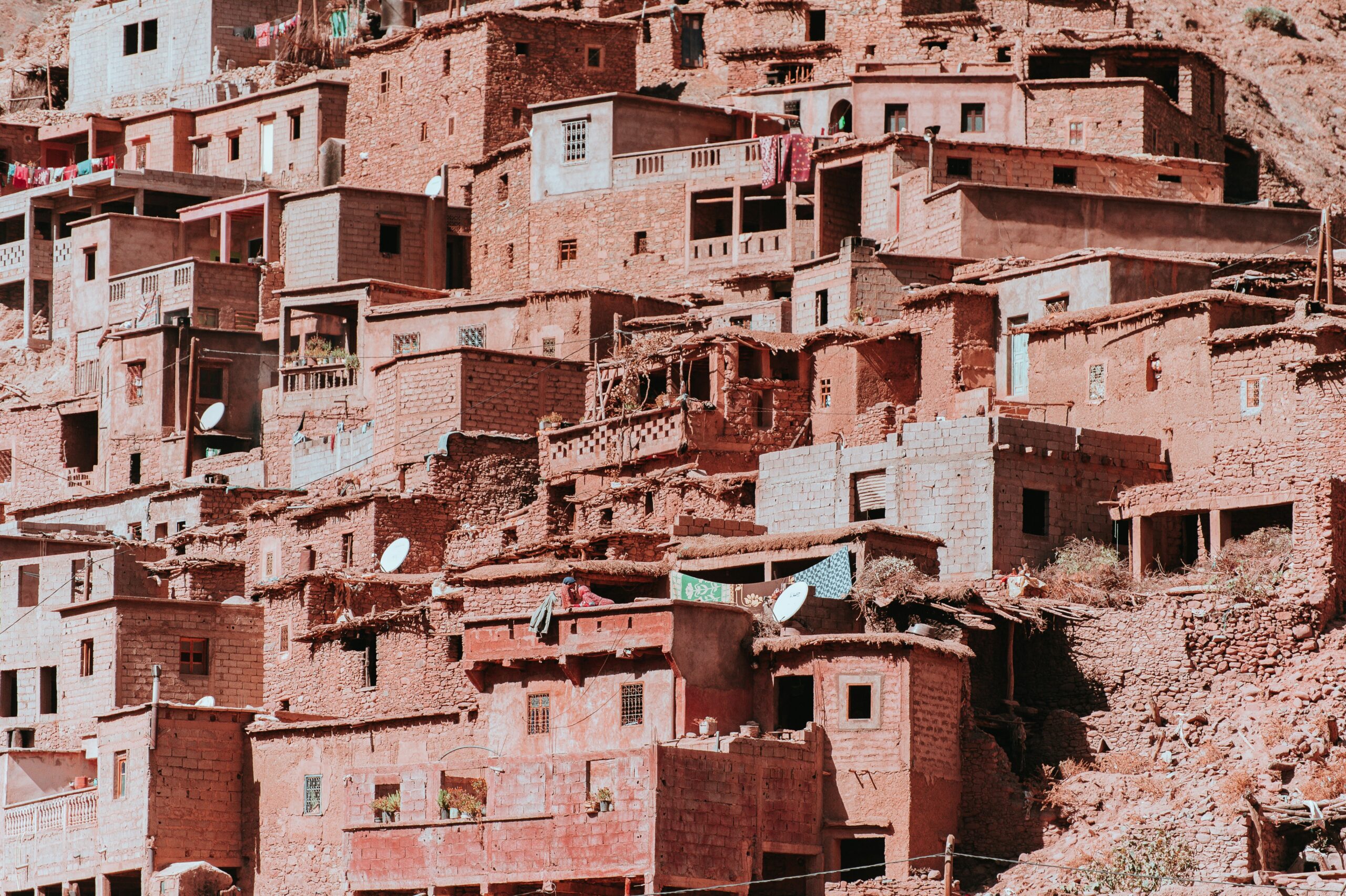
Introduction to Morocco: A Land of Diverse Cultures
Morocco, a captivating country located in North Africa, is a melting pot of diverse cultures and rich history. It stands as a gateway between Europe and Africa, which has shaped its unique cultural landscape over centuries. The nation’s heritage is a vibrant tapestry woven from Berber, African, Arabic, and Islamic influences, creating a multifaceted identity that is both exotic and fascinating.
The Berber people, the indigenous inhabitants of Morocco, have left an indelible mark on the nation’s culture. Their traditions, language, and art continue to thrive and can be witnessed in various aspects of Moroccan life, from the architecture of ancient kasbahs to the vibrant patterns of carpets and pottery. The Berber influence is particularly pronounced in regions such as the Atlas Mountains and the Sahara Desert, where traditional customs remain largely intact.
Arab and Islamic cultures have also played a significant role in shaping Morocco. Following the Arab conquest in the 7th century, Islam became the dominant religion, profoundly influencing Moroccan society. This is evident in the country’s stunning mosques, such as the Hassan II Mosque in Casablanca, and the intricate designs of Islamic art and architecture that adorn cities like Fes and Marrakech. Arabic, along with Berber languages, is one of the official languages, illustrating the deep-rooted Arab heritage.
African cultural elements further enrich Morocco’s identity. The country’s geographical proximity to sub-Saharan Africa has facilitated cultural exchanges that are evident in its music, dance, and cuisine. Gnawa music, with its hypnotic rhythms and spiritual roots, is a testament to this African influence, blending seamlessly with Morocco’s diverse cultural fabric.
Morocco’s strategic location and historical interactions have also invited European influences, particularly from France and Spain. These elements are visible in the colonial architecture of cities like Rabat and Casablanca, and in the widespread use of the French language in education and administration.
With its remarkable blend of cultures, Morocco offers a unique and enriching experience for travelers. Whether exploring the bustling medinas, the serene landscapes, or the historical landmarks, visitors are sure to be captivated by the country’s cultural diversity and historical depth.
Exploring the Vibrant Cities of Morocco
Morocco’s cities are a tapestry of vibrant life, rich history, and cultural diversity. Each city offers its own unique allure, from bustling medinas to serene palaces. Marrakech, often referred to as the “Red City,” is renowned for its lively souks, the historic Koutoubia Mosque, and the Jardin Majorelle, a botanical garden that provides a tranquil escape from the city’s hustle. The Djemaa el-Fna square, a UNESCO World Heritage site, is the heart of Marrakech, where storytellers, musicians, and food vendors create an unforgettable atmosphere.
Fes, known as the cultural and spiritual capital of Morocco, boasts one of the world’s oldest universities, Al Quaraouiyine. The labyrinthine streets of Fes el-Bali, the city’s ancient medina, are filled with historical treasures, including the stunning Bou Inania Madrasa and the intricate Nejjarine Fountain. Visitors can also explore the Royal Palace and the Mellah, the old Jewish quarter, to gain deeper insights into Fes’s rich heritage.
Casablanca, Morocco’s largest city, blends modernity with tradition. The iconic Hassan II Mosque, one of the largest mosques in the world, stands as a symbol of the city’s architectural prowess. The Corniche, a scenic waterfront promenade, offers a taste of Casablanca’s contemporary lifestyle, while the Art Deco buildings in the city center reflect its colonial past. The bustling markets and vibrant nightlife further add to Casablanca’s dynamic character.
Rabat, the capital city, exudes a more laid-back charm. Its historical sites, such as the Kasbah of the Udayas and the Hassan Tower, provide a glimpse into Morocco’s imperial past. The Royal Palace and the Mausoleum of Mohammed V are also notable landmarks. Rabat’s well-maintained gardens and coastal location offer a serene environment for relaxation and exploration.
Each of these cities, with their unique attractions and cultural experiences, contributes to Morocco’s allure as a top travel destination. Whether you’re drawn to the historical depth of Fes, the cosmopolitan vibe of Casablanca, the lively streets of Marrakech, or the tranquil beauty of Rabat, Morocco’s cities promise a rich and diverse urban exploration.
Adventures in the Moroccan Sahara Desert
The Moroccan Sahara Desert offers an array of thrilling adventures that captivate tourists from around the globe. One of the most iconic experiences is camel trekking. Riding atop these “ships of the desert,” travelers can traverse the vast, undulating sand dunes, experiencing the serene beauty and silence of the Sahara firsthand. This traditional mode of transport not only connects visitors to the ancient Berber culture but also provides a unique perspective of the breathtaking landscape.
Another unforgettable adventure is desert camping. Camp under a canopy of stars in a traditional Berber tent, where the night sky reveals an astonishing array of constellations, unspoiled by city lights. These camps often offer the opportunity to enjoy local music, dance, and cuisine, further immersing travelers in the rich cultural heritage of the region. Waking up to a Saharan sunrise, with its golden hues painting the dunes, is an experience that remains etched in memory.
For those seeking more active pursuits, exploring the stunning sand dunes on foot or by 4×4 vehicles provides an adrenaline rush. The vastness of the Erg Chebbi and Erg Chigaga dunes, some reaching heights of over 150 meters, presents a formidable yet exhilarating challenge. Sandboarding, a sport akin to snowboarding, is another popular activity that allows thrill-seekers to glide down the slopes of these majestic dunes.
The best times to visit the Sahara Desert are during the cooler months, from October to April. During these periods, the temperatures are more manageable, making it ideal for outdoor activities. It is vital to prepare adequately for a safe and enjoyable desert adventure. Bring plenty of water, sun protection, and appropriate clothing to handle both the daytime heat and the cooler nighttime temperatures. Engaging with a reputable tour operator ensures a well-organized and secure experience, allowing travelers to fully embrace the wonders of the Moroccan Sahara Desert.
The Majestic Atlas Mountains: Hiking and Beyond
The Atlas Mountains, a stunning range stretching across Morocco, Algeria, and Tunisia, offer an extraordinary experience for visitors. Renowned for its breathtaking landscapes and diverse hiking trails, the Atlas Mountains serve as a paradise for outdoor enthusiasts. From gentle walks to challenging treks, the region caters to all levels of hikers. The Toubkal National Park, home to the highest peak in North Africa, Mount Toubkal, is a must-visit for those seeking adventure. Ascending its 4,167 meters is a rewarding challenge that provides panoramic views of the surrounding terrains.
Beyond hiking, the Atlas Mountains reveal a rich tapestry of Berber culture. The Berbers, indigenous people known for their hospitality and vibrant traditions, have inhabited these mountains for centuries. Visiting traditional Berber villages offers a unique glimpse into their way of life. The villages, with their distinctive architecture and terraced fields, are often accessible via scenic trails. Interacting with the locals, tasting traditional dishes like tagine, and witnessing their artisanal crafts can be an enriching cultural experience.
During winter, the Atlas Mountains transform into a hub for skiing and snowboarding. The Oukaïmeden ski resort, located just 70 kilometers from Marrakech, is the highest ski resort in Africa. With its snow-covered slopes and modern facilities, it attracts both beginners and seasoned skiers. The juxtaposition of snowy peaks and the sunlit Moroccan landscape creates a picturesque setting for winter sports enthusiasts.
Additionally, the region offers opportunities for mountain biking, rock climbing, and exploring ancient kasbahs. The kasbahs, ancient fortresses made of earth and straw, stand as historical landmarks amidst the rugged mountains. Their architecture reflects the rich history and strategic importance of the region.
Whether you are drawn by the allure of its peaks, the warmth of its people, or the thrill of its outdoor activities, the Atlas Mountains promise an unforgettable journey. This majestic range, with its multifaceted appeal, is a testament to Morocco’s natural beauty and cultural richness.
Morocco’s Coastal Charms: Beaches and Seaside Towns
Morocco’s coastline stretches along both the Atlantic Ocean and the Mediterranean Sea, offering a diverse array of stunning beaches and charming seaside towns. One of the most popular beach destinations is Essaouira, a UNESCO World Heritage site known for its fortified medina, vibrant arts scene, and expansive sandy beaches. Visitors to Essaouira can enjoy a blend of relaxation and adventure, with opportunities for windsurfing, kitesurfing, and other water sports, thanks to the consistent trade winds that grace the area.
Another prominent coastal gem is Agadir, a modern city renowned for its long, crescent-shaped beach and year-round sunny weather. Agadir offers a perfect setting for those seeking a leisurely beach holiday, with its luxury resorts, golf courses, and a bustling marina. The city’s beach promenade is lined with cafes and restaurants, where visitors can savor fresh seafood and traditional Moroccan dishes while enjoying the scenic ocean views.
The coastal culture of Morocco is as captivating as its landscapes. In Essaouira, the annual Gnaoua World Music Festival attracts music lovers from around the globe, celebrating the rich musical heritage of the region. Meanwhile, the fishing ports of both Essaouira and Agadir provide a glimpse into the daily lives of local fishermen, with colorful boats and bustling fish markets offering a sensory feast for visitors.
Moroccan coastal cuisine is a delightful aspect of the travel experience. Seafood is a staple, with dishes like grilled sardines, seafood tagine, and calamari being local favorites. The fusion of Arabic, Berber, and French culinary influences creates a unique gastronomic adventure that complements the coastal scenery perfectly. Whether dining at a beachside cafe or a fine dining restaurant, the flavors of Morocco’s coastal towns are sure to leave a lasting impression.
From the historical allure of Essaouira to the modern appeal of Agadir, Morocco’s coastal charms offer something for every traveler. Whether you are looking to unwind on pristine beaches, indulge in water sports, or immerse yourself in the local culture and cuisine, the seaside towns of Morocco provide a perfect blend of relaxation and exploration.
Culinary Journey: Discovering Moroccan Cuisine
Moroccan cuisine is a vibrant tapestry of flavors and traditions, reflecting the country’s diverse cultural heritage. At the heart of this culinary wonderland are iconic dishes such as tagine and couscous, each telling a story of regional ingredients and age-old cooking techniques. Tagine, a slow-cooked stew named after the conical clay pot in which it is prepared, combines meat, poultry, or fish with a medley of vegetables and aromatic spices. Each region of Morocco boasts its unique variation, making every tagine experience distinct.
Couscous, another staple of Moroccan cuisine, is often served with tender meat and vegetables, accompanied by a rich broth. This dish is traditionally prepared during special occasions and family gatherings, embodying the spirit of Moroccan hospitality. The preparation of couscous can be quite the spectacle, with the grains being steamed multiple times until they reach the desired light and fluffy texture.
Beyond these well-known dishes, Moroccan street food offers an exciting array of flavors. From the savory bites of kefta (seasoned minced meat) and harira (a hearty soup) to the sweet treats like chebakia (sesame cookies) and msemen (layered flatbread), the bustling markets and narrow streets are a gastronomic adventure waiting to be explored. Street vendors often cook these delights right in front of you, providing an authentic and immersive culinary experience.
For those looking to delve deeper into Moroccan cuisine, culinary tours and cooking classes are highly recommended. These experiences not only teach the techniques behind traditional Moroccan dishes but also offer insights into the cultural significance of food in Moroccan society. Many cooking classes include a visit to local markets, where participants can learn about the spices and ingredients that form the backbone of Moroccan cooking.
Food in Morocco is more than just sustenance; it is a celebration of life, community, and tradition. Sharing a meal is a cherished practice that brings people together, fostering a sense of unity and belonging. Whether enjoying a home-cooked meal with a local family or savoring street food in a bustling souk, the culinary journey through Morocco is a feast for the senses and the soul.
Shopping in Morocco: Souks and Markets
Morocco’s souks and markets offer an unparalleled shopping experience, inviting travelers into a vibrant world of colors, scents, and sounds. These bustling marketplaces are integral to Moroccan culture, where the art of haggling is as much a part of the adventure as the diverse array of goods available for purchase. From the labyrinthine streets of Marrakech’s Medina to the coastal charm of Essaouira, the country’s markets are treasure troves waiting to be explored.
One of the highlights of shopping in Morocco is the variety of items on offer. Visitors can find a plethora of spices, textiles, and handcrafted goods. Traditional Moroccan spices, such as cumin, saffron, and ras el hanout, are popular souvenirs that add an authentic touch to any kitchen. The textiles, including hand-woven carpets and intricate rugs, showcase the skill of Moroccan artisans and are cherished by collectors worldwide. Handcrafted goods, such as leather bags, ceramic pottery, and metal lanterns, reflect the rich cultural heritage and craftsmanship that Morocco is renowned for.
To make the most of your shopping experience in Morocco, it is essential to embrace the local custom of haggling. Bargaining is expected in the souks, and it is a skill that can enhance your enjoyment and help you secure better deals. Start by offering half of the initial asking price and negotiate from there, always maintaining a friendly and respectful demeanor. Remember that haggling is a social interaction, and patience and politeness can go a long way.
Understanding the market culture can also enhance your shopping experience. The souks are often organized by type of goods, with specific areas dedicated to spices, textiles, jewelry, and more. Exploring these sections can help you find exactly what you are looking for and allow you to appreciate the diversity of Moroccan craftsmanship. Additionally, visiting markets during different times of the day can offer varied experiences, from the morning hustle to the evening calm.
In essence, shopping in Morocco’s souks and markets is not just about acquiring items; it is about immersing yourself in the local culture and engaging with the community. Whether you are seeking unique souvenirs or simply wish to soak in the atmosphere, the markets of Morocco promise an unforgettable adventure.
Practical Travel Tips for Visiting Morocco
When planning your visit to Morocco, understanding the visa requirements is crucial. Citizens from many countries, including the United States, Canada, and the European Union, do not need a visa for stays up to 90 days. However, it’s always best to check the latest requirements with the Moroccan consulate or embassy in your country to ensure a smooth entry.
Health and safety should be a priority during your travels. It is advisable to have comprehensive travel insurance that covers medical expenses. Vaccinations for hepatitis A, hepatitis B, and typhoid are recommended. Additionally, be cautious with street food and tap water; bottled water is readily available and is a safer option for drinking.
The best time to visit Morocco is during the spring (March to May) or autumn (September to November) when the weather is pleasant and ideal for sightseeing. Summers can be extremely hot, especially in the desert regions, while winters can be cold, particularly in the Atlas Mountains.
Understanding and respecting cultural etiquette is vital. Morocco is a predominantly Muslim country, and modest dressing is appreciated. Women should consider covering their shoulders and knees, while men should avoid wearing sleeveless tops in public. During the holy month of Ramadan, it is respectful to avoid eating, drinking, or smoking in public during daylight hours.
Transportation in Morocco is diverse and efficient. Major cities are connected by a reliable train network, while buses and shared taxis, known as “grands taxis,” are common for intercity travel. For a more personalized experience, renting a car is an option, but be aware of local driving customs and road conditions.
Accommodation options range from luxury hotels to traditional riads and budget-friendly hostels. Riads, which are traditional Moroccan houses with interior gardens, offer a unique and authentic stay. Booking in advance, especially during peak tourist seasons, is recommended.
Lastly, familiarize yourself with local customs. Bargaining is a common practice in markets and souks, and it is seen as part of the cultural experience. Learning a few basic phrases in Arabic or French can also enhance your interactions with locals and show respect for their culture.

